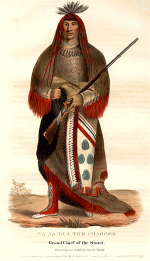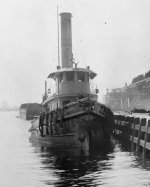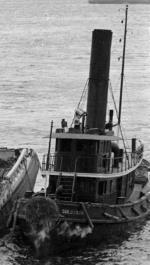Wa-na-ta (Dakota: Wánataŋ, which translates as One who charges, or Charger) or Wahneta was a chief of the Yanktonai, a tribe of the Dakota. The Yanktonai were located near the St. Peter River, which is today known as the Minnesota River, in present day Minnesota. They were said to have a population between five and six thousand individuals with 1,300 warriors.
Chief Wa-na-ta, also known as Wanata and Wanataan I, was born around 1795 in what is now Brown County, South Dakota. At age 18, Wanata was accustomed to the ways of war and fought under his father Wakinyanduta (Red Thunder), a Sisseton leader who eventually split off from that band to form the Cuthead band of the Yanktonai. He sided with the British against the Americans during the War of 1812, and
fought at the siege of Fort Meigs in 1813. Wanata was recruited by British Colonel Robert Dickson (who eventually became his brother-in-law), who convinced him to join the British in battle at Fort Sandusky. During this battle, Wanata charged the fort and was wounded, but earned himself the nickname "Charger". After the war, the British rewarded Waneta for his loyalty by presenting him with a captain's commission. He subsequently visited England and remained sympathetic to the British until 1820, when an abortive expedition against Fort Snelling resulted in a change of heart. Thereafter, he gave wholehearted support to American interests and even helped influence trade on the Missouri River. A prominent chief of the Dakota people, Waneta signed a trade treaty with the Americans on 25 July 1825. On 17 August 1825 he signed the first Treaty of Prairie du Chien which fixed the boundaries of Sioux territory.
He was murdered by his own tribesmen, who were upset with his leadership, in 1848. He died at the mouth of the Warreconne River, the present Beaver Creek in what is now Emmons County, North Dakota.
"Wa-Na-Ta, The Charger, Grand Chief of the Sioux" from McKenney and Hall's Indian Tribes of North America (Philadelphia, 1836)


